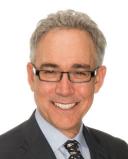
Addiction
The Opioid Epidemic: Past and Future
More than 130 people die from opioid-related drug overdoses each day.
Posted November 19, 2019 Reviewed by Kaja Perina
When I said goodbye to Dylan on November 21st, 2013, I did not think it would be the last time I would see him. He left me smiling, on his way to visit a friend in Long Beach for the night. That evening, at the young age of 26, Dylan was found deceased. His cause of death was an accidental overdose on Oxycodone.
Dylan was one of over 16,000 Americans who died in prescription painkiller related deaths in 2013 (in 2017 it was 47,600). The current opioid epidemic is unprecedented. Reports state that more than 130 people die from opioid-related drug overdoses each day, with the economic cost of the opioid crisis estimated to be $504 billion.
While effective analgesics, opioids are highly addictive, and adult patients undergoing surgery who receive an opioid prescription are at an increased risk of misusing and persistently using opioids. Time and time again, America witnesses the same story: a patient visits a doctor complaining about a sudden moderate pain or perhaps a chronic issue; the doctor provides the quickest solution on the market, prescription narcotic painkillers; the patient leaves satisfied and often on their way to a nasty addiction.
But why is this story becoming more common rather than less, despite increasing awareness of the prevalence of addiction in mainstream American culture? Why have physicians dished out more of these medications in recent years, rather than refusing to provide them to patients? How and why did opioids transition from being a treatment for end of life illness and postoperative pain relief to a commonly doled out solution to headaches and back pains? Theory suggests, and research confirms, that doctors were influenced by pressure from two angles: that of the manufacturers and of the patients.
The irony is that prescription narcotics do not fit their new purpose. According to Dr. Andrew Kolodny, president of the Physicians for Responsible Opioid Prescribing, controlled narcotics such as Hydrocodone and Oxycodone are “actually ineffective in treating long-term pain.” However, in a culture of fast food, instant messaging, and quick results, Americans seeking pain relief are not as concerned with the long-term solution.
A lot of society’s trust goes into the capabilities of modern medicine, and while the rise of prescription opioids was strongly driven by manufacturers and pharmaceutical companies, patients welcomed it. And when the patients have a demand, the pressure to fulfill these needs falls on the doctors. As Celine Gounder, physician, public-health specialist, and medical journalist wrote in the New Yorker, “The promise of a set of medicines that could cure pain was appealing to many patients—and, with a customer-is-always-right mentality having pervaded the doctor’s office, patients were able to pressure physicians to satisfy their requests for the pain pills they’d begun hearing about.” Gounder explains the difficulties for a doctor to deny the requests of their patients and send them out of their visit dissatisfied. “Doctors have a hard time saying no, whether a patient is asking for a narcotic to relieve pain or an antibiotic for the common cold. We are predisposed to say yes, even if we know it isn’t right.”
What’s worse is the consistent consumption of drugs like Hydrocodone and Oxycodone leads to increased tolerance and a condition called hyperalgesia, which is the increased sensitivity to pain after long term intake of pain medication. These consequences, in turn, require more pain medication for the patient and dependency develops before the drugs were ever technically abused.
With such a gradual progression to reliance on drugs labeled as legal and supplied in unnecessarily high quantities by an authority figure in a lab coat, patients and drug seekers do not fear the consequences of addiction or overdose. It is difficult to believe that the doctors we trust and depend on would put us at risk with the frequency and justification of prescription, the amount of opioids per prescription, and the number of refills on each prescription. The reality is that pain medication is not meant for long term use and the amount of pain after an operation should only last up to one week However, “there’s not enough awareness about how serious this crisis is,” Kolodny said. “I don’t think enough doctors know that these painkiller medicines don’t work for chronic pain.”
The pharmaceutical companies, from the start of this painkiller epidemic, capitalized on their ability to keep doctors misinformed. Big drug manufacturers recruited attractive marketers to convince physicians that their drug was the best painkiller on the market. We had cheerleaders from Big Ten schools, with no medical background or knowledge, put into a boot camp to learn the workings of the pharmaceutical industry, the doctor they will be selling to, and the benefits of their drug. It is these businessmen and women that are going into our doctors’ offices and selling our health care providers on what will be best for us, our family, our friends, and our loved ones. And doctors have been temporarily pleased when their patients report less pain, considering their job well done.
Unfortunately, once a doctor has begun prescribing these medications to the patients, it is difficult for them and their successors to cease providing these drugs. Taking that stand would lead to unhappy and dissatisfied patients, and the potential accusations against the doctors of malpractice. There are also the doctors who “just don’t want to take the extra time during a busy day to explain why that prescription for a narcotic isn’t a good idea” and those who “use the promise of prescription narcotics to persuade patients to keep their medical appointments, or to take their other medications,” writes Gounder. Dr. Sanjay Gupta expressed similar concerns in his CNN article: “It is easier for a doctor to write a prescription than to explore other effective options to combat pain, and it is easier for patients to take those prescription pills than to search for alternatives themselves. Both those things must absolutely change."
So how can the methodology of doctors treating pain be improved? Just as important, how can the patients’ understanding of a doctor’s decision to deny narcotics in certain circumstances be improved? The work must be done on multiple levels. Primarily, between the physicians and the FDA, there needs to be a relabeling of painkillers. Currently, the labeling on narcotics has no suggested maximum dose or duration of use by the FDA. Kolodny describes this as being “very broad.” He insists that “the way to turn this epidemic around is for doctors to prescribe painkillers more cautiously." And according to Kolodny, the FDA must change the labeling requirements on prescription painkillers so that it is “easier for medical schools and the larger medical community to prescribe these meds more cautiously."
The next step would be providing education to healthcare providers from sources other than the pharmaceutical companies. While doctors, for the most part, have good intentions when prescribing medication, they receive no more than a week's worth of education on pain and pain management. Education on addiction, predispositions to addiction, and abuse of medication could help doctors better identify at-risk patients and take preventative measures or connect those suffering to treatment.
As patients of our doctors and consumers of the pharmaceutical industry’s products, we must also take some action. With the knowledge that these medications could lead to negative consequences, we have the choice to seek other forms of pain management. Further, there are DNA tests available to see if you are predisposed to addiction. As a society, it is important that we know our own bodies and take steps to put an end to this pill epidemic.
Dylan’s death is just one of the countless lives lost. When we receive a prescription, we never think it could change our lives or the lives of others. Dylan did not get his first pain killer prescription with the intention to abuse the medication. However, as the refills were readily available, so was the opportunity to develop what turned out to be a deadly dependency. In a society where we are addicted to relief, a small prescription needs a big warning.
This blog has been written by Dina Khoury and Dr. Zeev Kain. Khoury is a medical student who is planning a career in psychiatry, UC Irvine School of Medicine.



